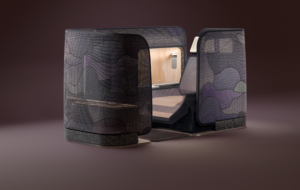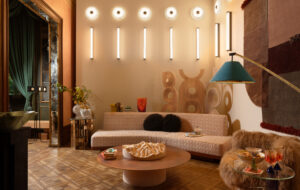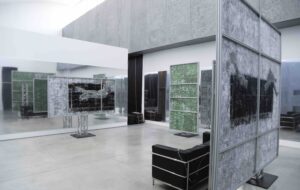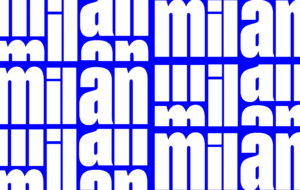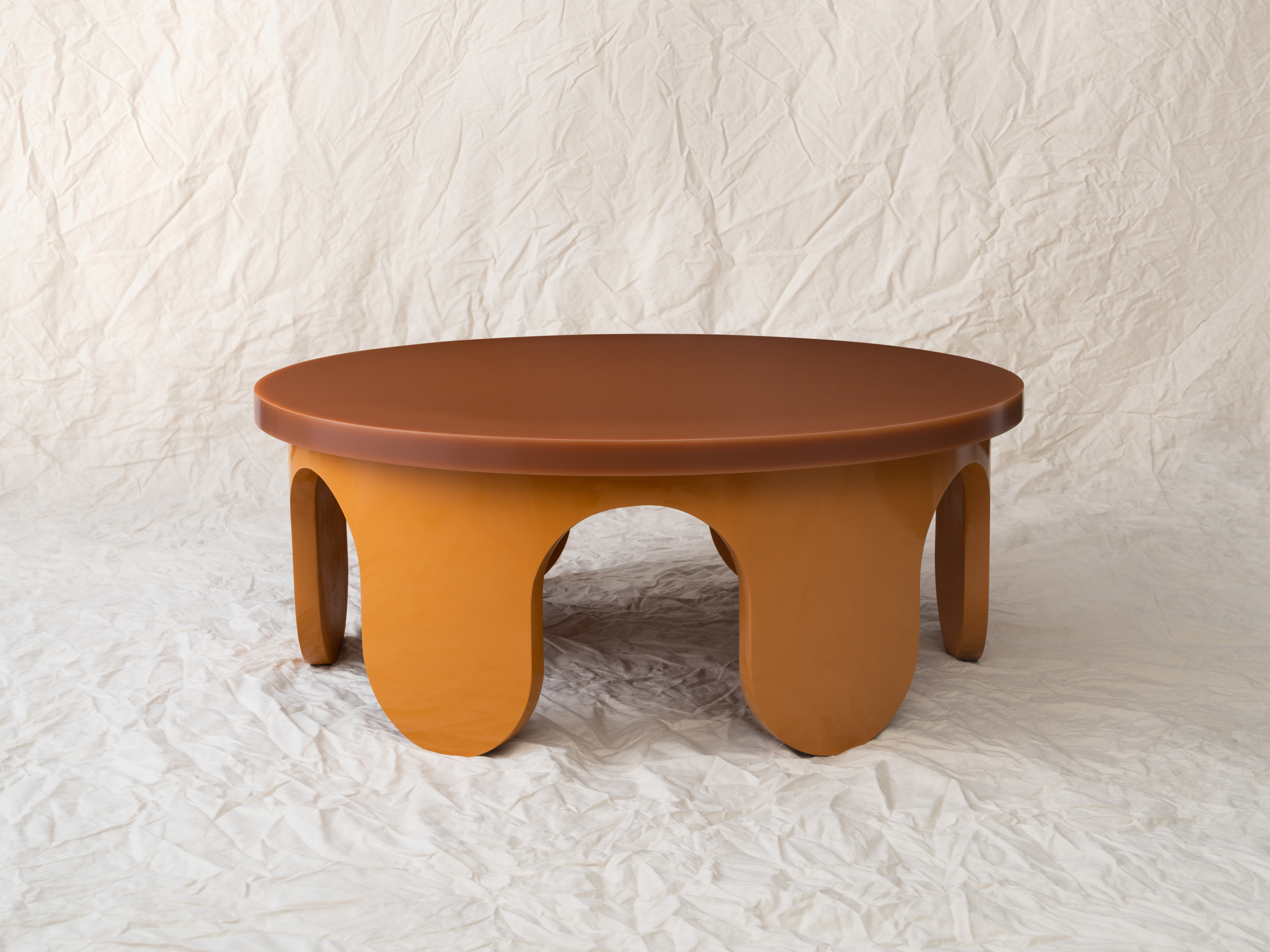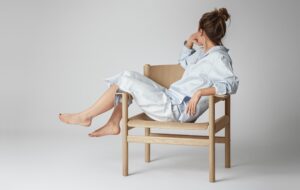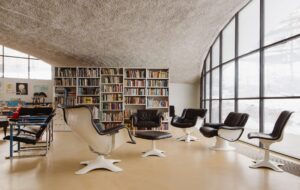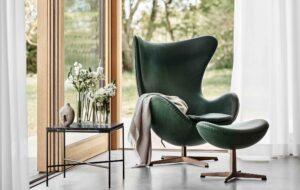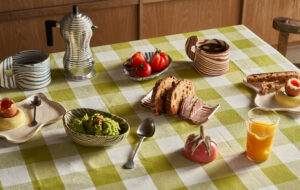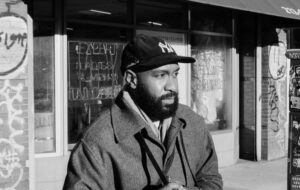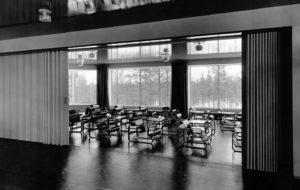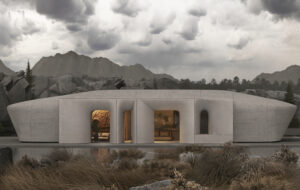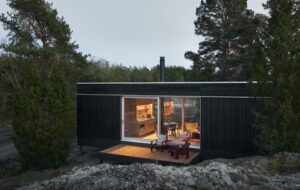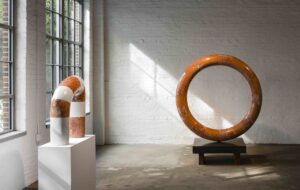

Jean Prouvé referred to Bauhaus furniture as the “vermicelli aesthetic”. His diminutive chairs and desks for infant schools show that even if he took a piece of cylindrical tube for the front legs, the back ones would be made using his typical tapering profile in bent sheet steel, which in most of his furniture is canted at an angle. This quote, and its relevance for viewing Prouvé’s work, indicates why he is a refreshingly disruptive force in the narrative of modernism.
His work is jaunty, unlike Mies van der Rohe’s or most of Marcel Breuer’s. It’s a pleasure to see it in an exhibition because it usually bears the traces of a hard life, whether in the form of ink-stained wooden table tops, chipped enamel on table legs, or the rusty frames of whole buildings. These were conveniently designed by Prouvé to be bolted together on site, and hence capable of the reverse process for acquisition by dealers and collectors as art objects.
All this and more is on offer at the Design Museum in an exhibition curated by Vitra, which now acts as an outsourcing agency for our own museums that lack the resources to put such shows together. Given this reality, we should be glad. There are, however, some irritations, such as a general shortage of information and a densely academic catalogue. These things are minor, however, compared with the stimulus provided by the objects themselves, which include many full-size samples of aluminium building panels and steel frames.
Much of the exhibition is best seen at floor level, since the undersides of the furniture, where the geometry of intersecting leg and frame profiles is reconciled, are far more interesting than the upper surfaces. Fortunately, the Design Museum doesn’t seem to mind you getting down there.
Unusually for a design exhibition, there is an emphasis on production and manufacture, since this was where Prouvé’s career began, in the family business in Nancy. At different times, he collaborated with Pierre Jeanneret (Le Corbusier’s cousin and partner) and Charlotte Perriand, as well as with some leading French modern architects. In England, his role as president of the jury for the Centre Pompidou competition in 1968, which favoured the scheme by Piano and Rogers, makes him doubly a hero of high tech.
There is perhaps a parallel to Prouvé in the character of Monsieur Hulot in Jacques Tati’s 1958 film Mon Oncle, which presents a division in French culture over modernity. Hulot represents the older France of interpersonal relationships, bricolage and joie de vivre, and proves capable only of undermining the new world, even when trying to be accepted by it.
As the owner of a factory producing modern furniture and clip-together buildings, Prouvé might have been on the side of modernity, but his work is generic to himself alone, and his life story itself is Hulot-esque in that he was the good guy whom other people pushed aside (the investors in his factory at Nancy sacked him in 1953, while none of his attempts to change the nature of house production led to much).
Prouvé’s example still challenges the conventions that separate design from fabrication. His designs really look like things created more in the workshop than on paper. Modernism does not have to mean mass production, and the welder can produce work as worthy of aesthetic admiration as the finest cabinetmaker.
Jean Prouvé: The Poetics of the Technical Object is at the Design Museum, London, until 25 March
www.designmuseum.org
images© VG Bildkunst, Bonn

